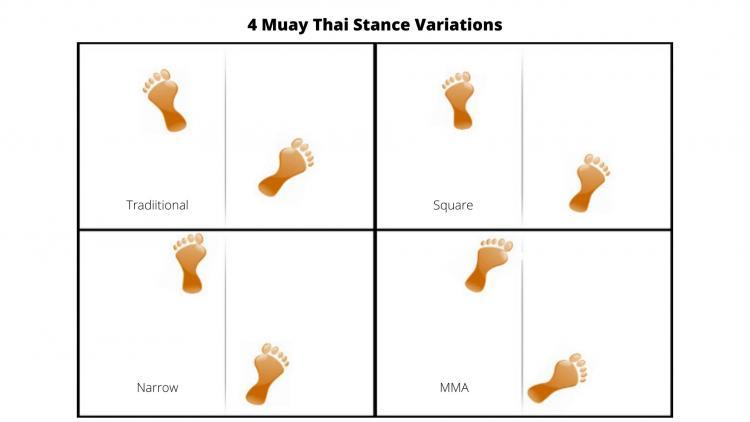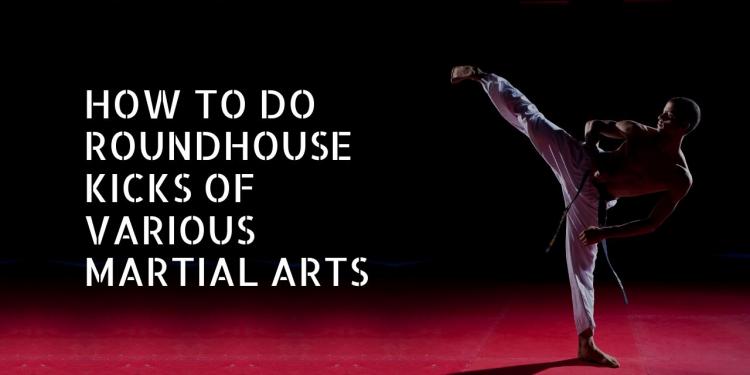In a previous article, I discussed the general stylistic differences between different martial arts when it comes to kicking. But I want to go further and discuss a specific kick---the roundhouse.
The roundhouse kick is both a fan favorite and a fighter's favorite kick because it is both powerful and fast. An analysis done by Anupam Singh showed that roundhouse kick has almost twice the velocity and almost three times the force of a side or spinning kick. In this article I want to go more in depth and discuss how to do a roundhouse kick according to the different martial art styles. For the sake of simplicity, I will only talk about throwing the roundhouse with the back foot.
More...
Chart Explaining the Differences
Because modern martial arts are such a melting pot now, your school may teach differently than what you see here. But the chart below represents the traditional mechanisms of the roundhouse kick according to the style. For example, kyokushin karate later modified the roundhouse kick to use the shin as the point of contact. However the traditional karate roundhouse kicks uses the ball of the foot or the instep as the point of contact.
Difference Between The Roundhouses
Fighting Stance | Contact point | Source of power | |
|---|---|---|---|
Muay thai | Squared | Shins | Hip rotation |
Tae kwon do | Side-on | Bottom of shin or instep | Chambering |
Sanda/sanshou | Bladed | Instep | Chambering |
Karate | Bladed | Ball of foot or instep | Chambering and hip rotation |
Muay Thai Roundhouse
The muay thai version is the most popular version used in MMA and kickboxing currently. And there is good reason for it. It is extremely devastating. While other styles relies on the chamber to create power, the muay thai round house gets all of its power from hip rotation. Many people who grew up learning traditional martial arts had to correct their technique when they joined an MMA gym because of this difference.
The muay thai roundhouse is done from an open stance. It is done in the following chain of sequence.
1. Step in at an angle with kicking foot
2. Rotate (and thrust) your hip, pivot with the lead foot, and swing the arm of the kicking side down
3. Let your leg naturally follow with the hips
4. Make contact with your shin
Here is a gif of the kick in action.

Muay thai roundhouse kick
In muay thai, the kick starts with the hip and not the leg. My coach once told me when I started that you are kicking with your hips, and your leg just naturally follows.
Unlike other martial arts, the muay thai stance is wide and open, allowing for maximum rotation of the hips, thereby generating devastating kicking power. Below you will see an image that I got from Muay Thai Scholar showing the 4 variations of the muay thai stance. As you can see, all variations are pretty open, even the one that is suppose to be narrow.

Tae Kwon Do (TKD) Roundhouse
The tae kwon do roundhouse kick is built for speed. Like many other traditional martial art kicks, you are told to chamber the kick. Here is how you are suppose to do a TKD roundhouse kick
1. Chamber the kicking leg
2. Pivot with the ball of the standing leg
3. Then extend the chambered leg
4. Make contact with lower shin or instep
In the gif below, you can see Youtuber Alex Wong doing the roundhouse kick. You will see that the rotation comes not from the hip, but from ball of her standing foot.

Tae Kwon Do roundhouse kick
Unlike muay thai, the rotation is done at the end of the kick, not the beginning. Because the rotation is done at the end of the kick, the kick can be misleading and start off like a front kick.
The tae kwon do fighting stance is probably the most particular out of all the ones discussed in this article. When in competition, they are essentially standing sideways. You can see that in the image below of two TKD practitioners sparring. Notice how narrow they are.

Tae Kwon Do stance
Sanda (sanshou) Roundhouse
Kung fu, sanda, sanshou, wu shu, or whatever you want to call it, it all really refers to the same thing---martial art from china using a combination of punching and kicking. Sanda (or sanshou) is used to refer to the fighting aspect of the art.
Like many other traditional martial arts, Its roundhouse kick also uses the chambering method.The kung fu roundhouse is done in the following manner:
1. Open up the stance slightly by pointing the lead toes outward
2. Chamber the kicking leg
3. Pivot with ball of standing foot and fully extend kicking leg
5. Make contact with instep
You can see the mechanics of the kung fu roundhouse kick by Niel Willcott in the gif below. Pay attention to the standing leg.

Kung fu roundhouse kick
You will notice that the instructor (Niel Willcott) points the lead toes slightly outward in order to open up the stance for the kick. And then after the kick is chambered, he pivots on the ball of the front foot to open up even more before fully extending the kick. This is different than the TKD and karate roundhouse, where the initial toe-out isn't need. The initial turning of the toes outward is actually similar to the initial step of the muay thai roundhouse---it is done to open up the kick.
Karate Roundhouse
The karate roundhouse kick (mawashi geri) is the compromise between traditional styles and muay thai. Karate roundhouse kicks has a little bit of chambering and a little bit of hip rotation.
The karate stance is wide. This changes how the roundhouse kick is done. Instead of stepping with the front foot like muay thai, a karate roundhouse can be done without the step. Here is how the karate roundhouse is done.
1. Chamber the leg
2. Rotate on the pivot foot
3. Extend kicking leg fully
4. Make contact with instep or ball of foot
Here is a gif of UFC fighter Stephen Thompson doing a karate roundhouse kick.

Karate roundhouse kick
Like TKD, the pivot of the posting leg is done towards the end of the kick. However, because the karate stance is wide than the TKD and kung fu stance you can get more power from the pivot by engaging the hips.





